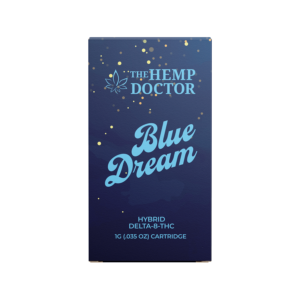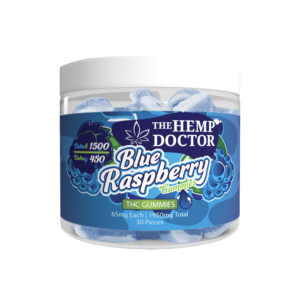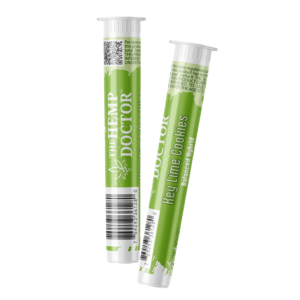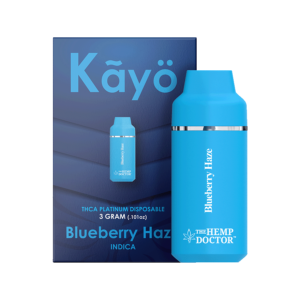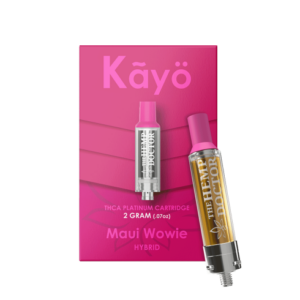The use of solvent in extracting cannabis compounds has led to several innovative products offered in the cannabis concentration market today. However, many are rediscovering a cleaner and more nuanced high out of concentrates, which “solventless extraction” helps achieve.
This blog exposes the essence of solventless cannabis, unravels the process and tools used, and highlights its myriad applications.
What is Solventless Extraction?
Solventless extraction, a method revered for its ability to separate cannabis compounds without the use of harsh chemicals, is both an art and a science. This technique, which relies on physical means to isolate cannabinoids, terpenes, and flavonoids, stands in contrast to solvent-based extractions that utilize substances like butane, ethanol, or CO2.
Rooted in ancient practices, cannabis enthusiasts and purists often prefer solventless methods, citing the enhanced flavor profile and purity of the final product. The essence of solventless extraction is its ability to maintain the plant’s cannabinoid and terpene integrity, offering a truly authentic experience.
The Appeal of Going Solventless
The burgeoning interest in solventless cannabis products is not solely based on the preservation of the original cannabinoid and terpene profiles. Going solventless has several benefits for both consumers and manufacturers. Here are some of them.
Purity and Safety
The hallmark of solventless extraction lies in its ability to produce concentrates of unparalleled purity and quality. Without the interference of chemicals, the terpene profile and cannabinoid content of the cannabis plant are preserved, ensuring a more natural and robust product. This not only enhances the flavor and aroma but also maintains the therapeutic properties of the plant.
Products derived from solventless methods are often considered superior in the cannabis community for their clean, unadulterated nature. The absence of solvents means there is no risk of ingesting harmful residues, a significant appeal for health-conscious consumers.
The nuanced, potent experience afforded by solventless extracts underscores their growing popularity among both connoisseurs and ordinary users alike.
Environmental Impact
Solventless extraction stands out not only for its product purity but also for its minimal environmental footprint. In contrast to solvent-based methods, which involve the use of volatile organic compounds and generate hazardous waste, solventless techniques are inherently cleaner and greener.
By eliminating the need for chemical solvents, the process reduces air and water pollution, contributing to a more sustainable cannabis industry. This alignment with environmental conservation is increasingly important to both consumers and producers, reinforcing the shift towards methods that not only produce superior products but also protect the planet.
Flavor and Aroma Preservation
Terpenes are aromatic molecules that add character to a strain by giving it its signature scent and flavor. In solvent-based extractions, terpenes are removed because of their fragility when exposed to chemicals, heat, and harsh environments.
Solventless extraction skips the process of using too much heat, which preserves most of the terpenes originally the strain holds. The end result is a more flavorful and aromatic concentrate or extract.
Consumer Preference
As cannabis consumers are becoming more aware of their options, it’s becoming evident to them that a more sophisticated cannabis experience can be received from solventless concentrates. This is a huge factor in the growing demand for solventless products like live rosin and bubble hash.
Applications in the Real World: From Medicine to Edibles
The versatility of solventless cannabis extracts spans various applications, from medical treatments to recreational products.
In the medicinal realm, solventless extracts are prized for their purity and efficacy, providing patients with a safe option free from solvent residues. They are used in the formulation of tinctures, topicals, and oils, catering to a range of health issues with minimal side effects.
On the recreational side, the potent and clean nature of solventless extracts enhances edibles, vape cartridges, and dabbing concentrates, offering consumers a premium experience. As technology advances, solventless extraction is set to revolutionize product development, enabling more effective and diverse cannabis-based solutions across industries.
As detailed by sources like PubMed Central (PMC), solventless cannabis products have shown promising therapeutic potential across a broad spectrum of health conditions, suggesting a bright future for solventless methodologies in both research and consumer product development. With ongoing advancements in extraction technology, such as the pioneering CDT, the cannabis industry is well-positioned to cater to the increasing demand for products that are not only effective but also manufactured with safety and sustainability in mind.
Different Techniques of Solventless Extraction
Several solventless extraction techniques have emerged, each offering unique benefits. Techniques range from simple hand-pressed hashes, celebrated for their tradition and minimalistic approach, to more sophisticated ones like Rosin Press and Ice Water Hash.
The advent of Cellular Deconstruction Technology represents a leap forward, utilizing physics instead of chemicals to yield the purest extracts possible. This method not only ensures a solvent-free product but enhances bioavailability, making the cannabinoids more accessible to the body.
Each technique serves different needs and preferences, yet they all share the common goal of preserving the plant’s natural essence and delivering a cleaner, more potent product.
Hand-pressing (traditional)
Hand-pressing is a traditional technique whereby heat and pressure are applied to cannabis flowers or hashish, which in turn extract resin. It’s a simple and historic method not demanding sophisticated machines or device requirements. Hand-pressing has been used for many years to create high-quality concentrates.
Ice Water Extraction (Bubble Hash)
Ice water extraction is another term for “bubble hash.” This process involves subjecting trichomes from the plant material to a combination of ice water and agitation. In this manner, it generates grades of bubble hash on a scale from “full melt” to “hash rosin.”.
The main difference between bubble hash varieties is the different filtration sizes, measured in microns, which vary in quality and potency.
Dry Sifting
Dry sifting is the process of using fine-mesh screens to sift or sieve cannabis while collecting the kief, or trichome head, into one area. It is simple and results in a powdery extract.
The tools include mesh screens that allow holes for kief collection, a pair of collection trays to collect the kief, and one to catch the plant material. After sifting, the collected kief can be pressed into hash or consumed to create a versatile end concentrate.
Rosin Pressing
Rosin pressing is an extraction method that produces a solventless concentrate from the flowers, hash, or kief of the cannabis plant. The process yields a high-quality and potent concentrate.
This process involves preparing the cannabis material, applying heat and pressure using a rosin press over it, and eventually collecting the extracted rosin. This is a highly potent and pure type of concentrate.
The solventless nature of the process is what makes rosin pressing popular. It can give a very strong concentrate yet maintain the terpenes and cannabinoids in the end product that are natural and found in the plant material.
Delving into the Process of Solventless Extraction
The solventless extraction process might seem complex, but it revolves around simple physics principles and meticulous handling. To give an overview of the step-by-step procedure of solventless extraction, we’ve compiled all of the processes mentioned above and made one generalized process. Here’s how it goes:
Step 1: Prepare the Raw Material
Select the freshest cannabis with the highest-quality condition. The more resinous a cannabis is, the better.
Step 2: Freeze-Drying
Following separation, processes like freeze-drying are employed to ensure the complete removal of moisture, negating any bacterial growth and preserving the integrity of these compounds. For creators aiming for exceptional purity and potency, the delicacy of the solventless process and its ability to retain the plant’s full spectrum of compounds make it a method of choice.
Step 3: Physical Agitation
Techniques such as water hash or ice-water extraction and the innovative Cellular Deconstruction Technology rely on temperature fluctuations and physical agitation to separate trichome heads from the plant material. These heads are rich in cannabinoids and terpenes, the compounds responsible for the plant’s therapeutic effects and aroma.
Step 4: Dry Sifting
Place the cannabis in a sifting box and gently rub or shake the cannabis material across the mesh or screens to break off the trichomes from the cannabis plant material. There should be a collecting box ready to collect the kief fallen through the screens.
Step 5: Press the Concentrate
Hand-pressing and rosin-pressing are two ways to press the concentrate physically. Here’s how each method is carried out:
Hand-Pressing
Place the collected kief between parchment paper. Using the warmth of your hands or pressing machines, apply pressure to the kief by pressing the parchment paper to form a hash. Place the collected kief between
Rosin-Pressing
Place the collected kief in a rosin press and apply a temperature between 160-220°F and pressure to the material through the machine. Once a sticky concentrate comes out of the material, it is collected and refined.
Navigating the Challenges of Solventless Extraction
While solventless extraction offers numerous benefits, it is not without its challenges. The techniques require precise control over factors such as temperature and pressure, demanding expertise and specific equipment. Moreover, the initial investment in technology, like freeze dryers or mechanical presses, may be higher compared to traditional methods.
The scalability of solventless extraction has also been a topic of discussion, with concerns over meeting the high demands of the burgeoning cannabis market. Despite these hurdles, the industry’s commitment to innovation is driving improvements in efficiency and accessibility, gradually overcoming these obstacles to pave the way for wider adoption of solventless techniques.
Choosing a Solventless Product: What to Look For
When navigating the diverse world of cannabis products, opting for solventless extracts offers a myriad of benefits—purity, potency, and safety being paramount.
Consumers should look for clear labeling that certifies the product as solventless, indicating it is free from harsh extraction chemicals.
Additionally, understanding the different types of solventless techniques and their respective outcomes can help buyers make informed decisions based on their preferences for flavor, potency, and intended use.
With the landscape of solventless cannabis continually evolving, staying informed about the latest advancements and offerings, such as those from Cannovia, is crucial for those seeking the highest quality cannabis experience.
The Future is Solventless
Solventless extraction methods are paving the way for purer, safer, and more environmentally friendly cannabis products. By understanding the meaning, the meticulous process, and the widespread applications, consumers and producers alike can appreciate the value and potential of solventless extractions in the cannabis industry.
